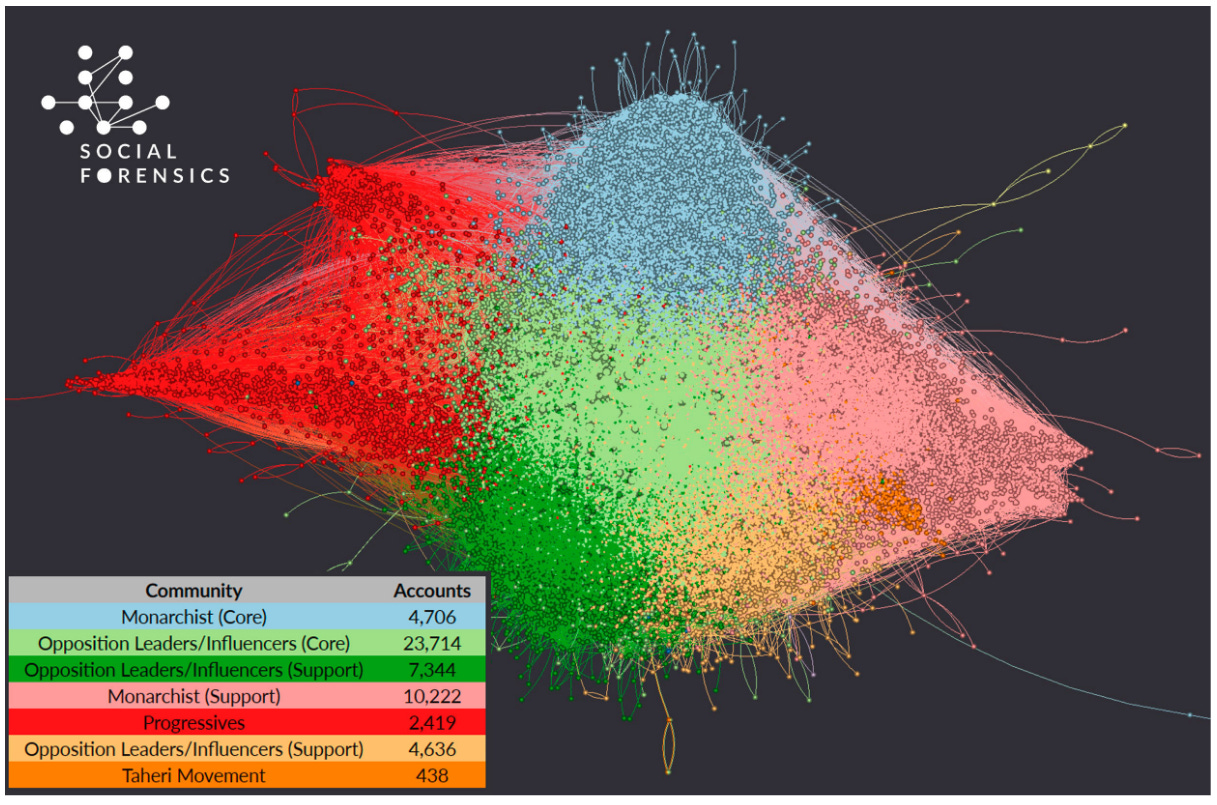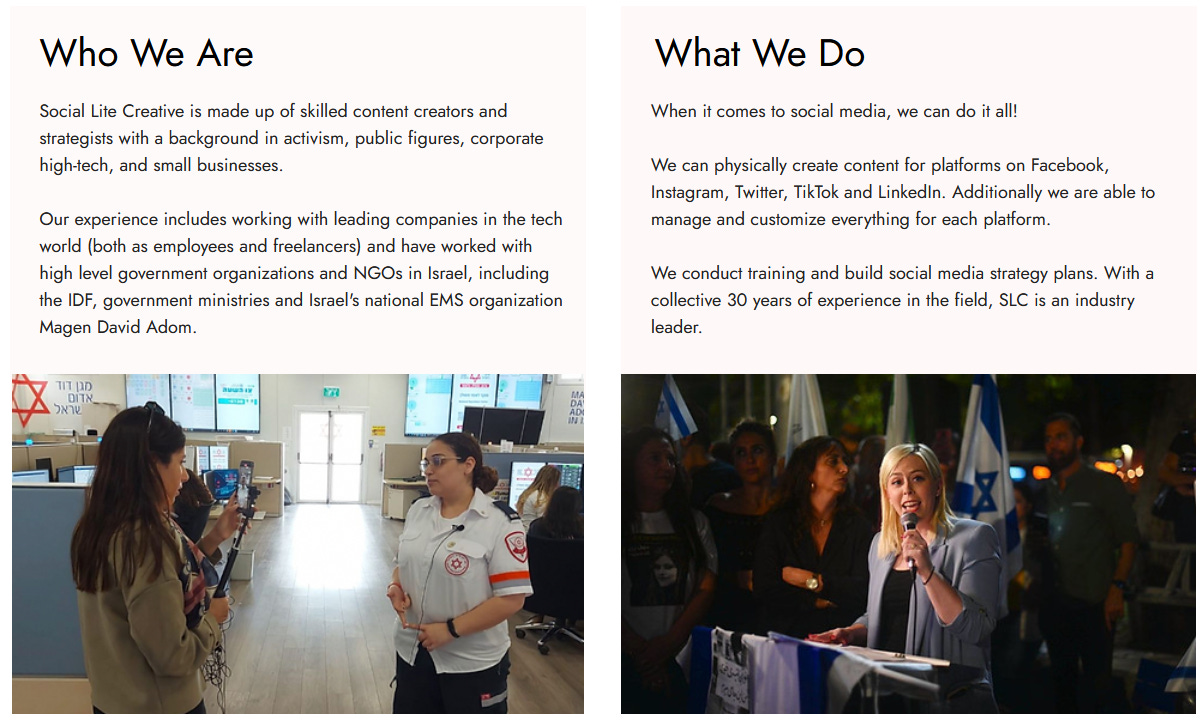
All my investigations remain freely accessible thanks to the incredible generosity of my readers. Independent journalism, however, demands ongoing funding. If you appreciate this article or others, please think about sharing it or becoming a paying subscriber. Your support is deeply appreciated and will never be forgotten. To buy me a coffee or two, please click this link.
On October 3rd, Haaretz released a remarkable report uncovering how, for years, the Zionist entity has secretly run extensive “online operations” aimed at boosting the “public image” of Reza Pahlavi, the eldest son of the Shah of Iran and claimant to the country’s defunct throne, both domestically and globally. These efforts employed advanced technology, including artificial intelligence and diverse social media manipulation tactics, alongside other digital warfare tools designed to persuade audiences that Pahlavi is the rightful exiled heir to Tehran’s leadership.
Hundreds of fabricated online profiles, featuring AI-generated photos and fictitious biographies, advocate for reinstating the Islamic Republic’s monarchy while circulating images and videos of Pahlavi. These accounts are managed by a covert group of Persian speakers specifically recruited by Israeli intelligence for this initiative. Bot and troll networks further amplify their messaging, which is continuously refined through audience analysis. An additional aspect of this digital campaign is dedicated to elevating Gila Gamliel, a member of Benjamin Netanyahu’s administration and Tel Aviv’s official liaison with Pahlavi.

Zionist cyberwarriors hard at work
Independent digital investigators uncovered the network after Gamliel posted an AI-generated video on social media, titled “Next Year in Free Tehran.” This fictional footage, released on June 15th — three days into the Zionist entity’s problematic 12 Day War, coinciding with the day when Netanyahu predicted imminent regime change in Iran — achieved significant exposure, most of which was likely artificial. The video depicted Netanyahu, his wife, Gamliel and her partner, along with Pahlavi and his wife, walking through Tehran’s streets.
According to Haaretz, “The video received many more views than most of the minister’s X posts, and these and other attempts to amplify it” enabled researchers to trace a network of bots and fake accounts artificially boosting Gamliel’s frequent public calls for regime change in Iran and her connection to Pahlavi. “Many of these accounts were opened in 2022, at the height of the so-called hijab protests in Iran.” Additionally, more than 100 allied accounts were created during the 12 Day War to further increase the malignant network’s reach.
Haaretz also hints, “this doesn’t appear to be the only campaign operating on this issue from Israel.” Still, their explosive revelations confirm that the Zionist entity — and possibly other hostile foreign actors, including the US — were deeply involved in covert psychological warfare operations aimed at manufacturing consent for Pahlavi’s ascension as Iran’s ruler at critical moments when regime change in Tehran was openly advocated by Israeli officials, Western governments, and the mainstream media.
Those efforts ultimately failed. While Pahlavi occasionally garners positive attention from Western media, he lacks any genuine support within Iran itself, and even the majority of expatriate critics reject the idea of him assuming power. In fact, his reputation is so toxic that his endorsement effectively destroys any challenge to Tehran’s government. The fact that so many resources have been — and apparently continue to be — dedicated by the Zionist entity to this fruitless endeavor stands as an embarrassing and monumental failure.
‘Monarchist Accounts’
More insights into Israel’s covert online efforts to promote Pahlavi are found in a July 2023 report by data analytics group Social Forensics, focused on “state-sponsored platform manipulation” during the 2022 Iranian protests. Their research found Tehran was targeted by extensive cyberwarfare campaigns throughout this period, involving “disinformation, smears, and threats” from vast bot and troll networks especially active on Twitter. While the report did not definitively assign blame, its findings strongly implicate Tel Aviv.

Social Forensics uncovered multiple distinct “communities” of weaponized accounts targeting Iran during this time, including groups labeled “progressives.” The most prominent were the “monarchists,” whose accounts commanded substantial followings and generated notable engagement, both genuine and artificial. Many users displayed crown emojis in their names, signaling monarchist allegiance. The firm concluded over 95% of these accounts were automated “sockpuppets,” writing:
“Most…are inauthentic and function to flood Twitter with monarchist, pro-Pahlavi imagery and content to make it seem like there is a larger base of monarchist supporters on Twitter than reality reflects.”
In March 2023, hundreds of pro-Pahlavi bots were banned by Twitter/X for breaching platform rules on manipulation. Despite many swiftly reemerging with nearly identical usernames and resuming disruptive behavior, prominent critics of Tehran condemned these mass removals. Among them was Alireza Nader, a former senior official at the well-known, pro-Pahlavi Zionist lobbying group Foundation for Defense of Democracies, as well as the opaquely funded exile organization National Union for Democracy in Iran. Social Forensics found Nader followed and amplified several fake monarchist accounts.
The firm also discovered numerous official Israeli government accounts following the most influential pro-Pahlavi sockpuppets. Notably, about one in eight accounts followed by @IsraelPersian, which targets Iranian audiences, were “inauthentic monarchist accounts” advocating “for the overthrow of the Islamic Republic and the return of exiled Crown Prince Reza Pahlavi to the country as the leader of a constitutional monarchy.” Yet the evidence linking Tel Aviv to managing this combative bot network extends further.
A genuine user followed by @IsraelPersia and other official Zionist accounts is Emily Schrader, CEO of digital marketing firm Social Lite Creative. At the time of Social Forensics’ research, her company’s website claimed openly to work with “high level government organizations and NGOs in Israel, including the IDF.” The investigation determined Schrader’s follower count “is inflated and her tweets are artificially amplified by the same inauthentic accounts” promoting insurrection in Iran, including monarchist bots.

Since amended entries on Social Lite Creative’s website
‘Peddling Distrust’
Schrader’s open collaboration with multiple Israeli state bodies, including its military apparatus, strongly suggests Tel Aviv orchestrated the pro-monarchist “platform manipulation” campaign. These activities suspiciously coincided with the outbreak of protests following years of Pentagon-led covert online attacks against Iran. These operations were revealed by digital analysts after Twitter and Meta dismantled a vast network of US military-run accounts that “used deceptive tactics to promote pro-Western narratives” in Central and West Asia.
Iran was a primary focus, with Pentagon psychological operations specialists managing numerous anti-government media outlets publishing Farsi content and running related social media channels supported by extensive bot and troll networks. These personas often posted non-political material, like Iranian poetry and images of Persian cuisine, to appear more authentic. They also interacted with genuine Iranians on Twitter, occasionally spreading jokes about internet memes. This vast network employed a broad ideological spectrum, utilizing various narratives tailored to different audiences.
For instance, some Pentagon-affiliated ‘Iranian’ bots and trolls voiced “hardliner” perspectives, condemning the Islamic Republic for being domestically too lenient and insufficiently assertive in regional affairs. Others impersonated left-wing, secular, or other opposition groups. This constituted an all-encompassing digital campaign targeting every angle. Notably, many accounts advocated women’s rights and protests against compulsory hijab. One Pentagon-circulated meme compared the treatment of women abroad with that in Iran, juxtaposing images of Western female astronauts with an alleged local abuse victim.

The destruction of the hijab became a central symbol of the protests that soon spread in Tehran and gained extensive foreign media attention, accompanied by widespread calls for regime change in Iran. Quickly, Pahlavi and close allies such as Masih Alinejad, a veteran of US-funded propaganda campaigns against the Islamic Republic, who has openly advocated Zionist entity attacks on Iran and assassination of its leaders, claimed to lead the protests. However, their attempt to seize control resulted in the swift collapse of the unrest locally.
A withering analysis titled “why Iran’s ‘woman, life, freedom’ revolution failed,” authored by Zionist lobby-connected Mariam Memarsadeghi—who also supports regime change in Tehran—attributes the failure largely to Pahlavi’s attempt to tie himself so closely to the protests. She pointed out that the fake monarch’s inner circle promotes extreme “Iranian nationalism” calling for “retributive violence [and] summary executions” of opponents, while “spreading distrust and attacking other opposition leaders on social media.” These actions deeply alienate Iranians inside and outside the country, irreparably damaging Pahlavi’s reputation.
In April 2023, Pahlavi made a surprise visit to Tel Aviv. Although the Western media showed little interest, Israeli outlets hailed the trip as a landmark event. The Times Of Israel claimed the “historic” journey served as a “healing process for many Iranian Jews,” leaving them with “a unique sense of joy, optimism, and a feeling of healing.” When questioned about the reaction from ordinary Iranians, Pahlavi asserted their strong support was indisputable:
“Don’t take my word for it, search on social media…on Twitter, Instagram, any platform. If you do the research yourself, you don’t need to ask me the question. The answer is right before your eyes.”
In reality, that “answer” was supplied by non-existent individuals generated by “online operations” orchestrated by Israel and likely other foreign powers aiming for regime change in Iran. Undeterred by the 2022 operation’s shortcomings, Pahlavi was again artificially promoted during the 12 Day War by a Zionist-backed social media campaign, detrimentally so. A July report from Tel Aviv’s Institute for National Security Studies concluded that monarchist support for rebellion during the conflict instead bolstered government backing, “rallying the public around the flag”:
“It is therefore advisable to avoid ties, when possible, with Iranian opposition groups (including some monarchist circles in the diaspora) who are perceived by large segments of the Iranian public as tainted and having betrayed Iran in its time of need. Although aligning with pro-Western and pro-Israel diaspora groups that push for revolutionary change may seem natural, such associations may, in fact, undermine the credibility of internal opposition and ultimately obstruct the desired outcome.”
Original article: kitklarenberg.com




